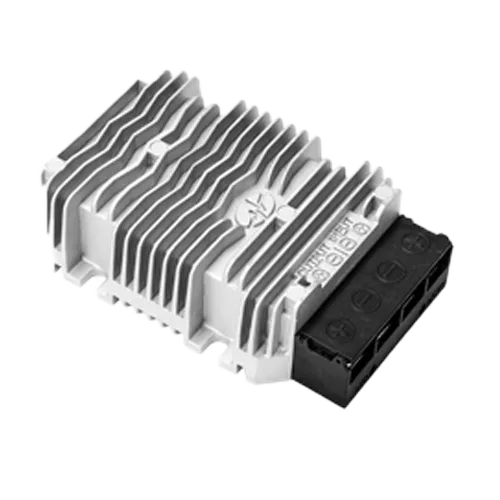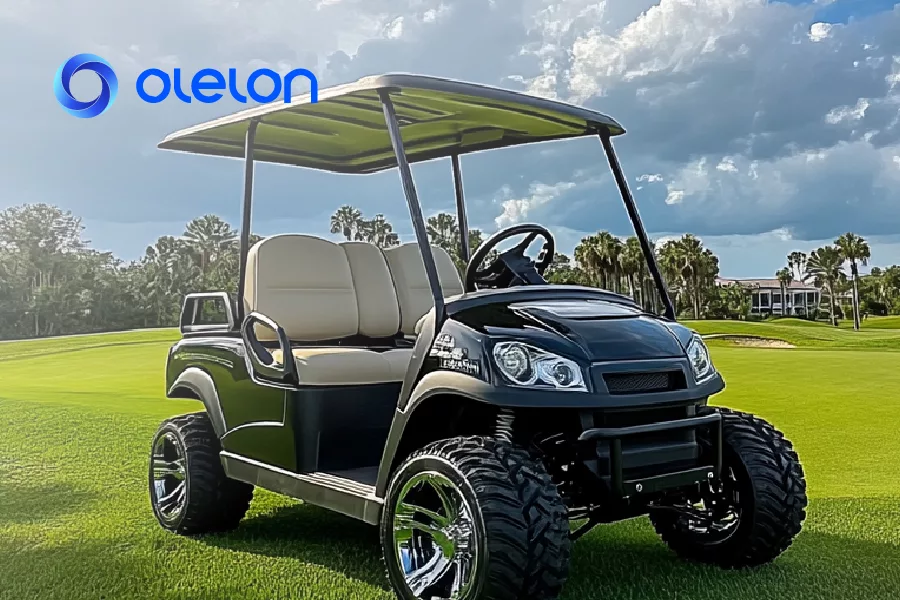Golf carts are popular for their convenience and environmental benefits. The choice of motor—AC (alternating current) or DC (direct current)—can significantly impact performance, efficiency, and maintenance. This article explores the use of AC and DC motors in golf carts, with a particular focus on Club Car models. We will also discuss how LiFePO4 batteries can support AC motors, incorporating professional electrical equipment like inverters and variable frequency drives (VFDs). Additionally, we’ll delve into methods for converting AC to DC and DC to AC.
AC vs. DC Motors in Golf Carts
When choosing a golf cart, you typically decide between AC (alternating current) and DC (direct current) motor models. Here’s a brief overview of the key differences and benefits:
- Higher RPM Rates:
- AC Motors: Higher RPM rates lead to faster top speeds and better performance at lower speeds.
- DC Motors: Lower RPM rates mean they work harder to achieve the same speed, leading to quicker wear.
- Uphill and Downhill Performance:
- AC Motors: Provide consistent power and smoother operation on inclines and declines.
- DC Motors: May struggle on hills, with noticeable speed reduction going uphill.
- Less Wear and Tear:
- AC Motors: More durable with less wear due to steady current flow, reducing repair and maintenance needs.
- DC Motors: Prone to more wear due to uneven current flow, leading to higher maintenance and potential overheating issues.
Club Car and AC Motors
Many newer Club Car models, such as those in the Precedent and Onward series, feature AC motors. These models benefit from improved acceleration, greater power, and enhanced efficiency. The shift towards AC motors in Club Car vehicles aligns with the industry’s broader trend of adopting more efficient and powerful electric motors.

Supporting AC Motors with LiFePO4 Batteries
LiFePO4 (lithium iron phosphate) batteries are increasingly popular in golf carts due to their high energy density, long cycle life, and safety. However, LiFePO4 batteries output DC power, while AC motors require AC power. Here’s how to bridge that gap:
Inverters
To use LiFePO4 batteries with AC motors, an inverter is essential. An inverter converts the DC power from the battery to AC power, which can then be used to drive the AC motor.
- Function: Converts DC to AC.
- Types: Pure sine wave inverters are preferred for their efficiency and compatibility with sensitive electronics.
- Application: In golf carts, an inverter allows the DC power from the LiFePO4 battery to power the AC motor seamlessly.
Variable Frequency Drives (VFDs)
VFDs are crucial for controlling the speed and torque of AC motors by adjusting the frequency and voltage of the power supplied to the motor.
- Function: Controls motor speed and torque.
- Benefits: Improved efficiency, precise control, and better performance.
- Application: In a golf cart, a VFD can enhance the driving experience by providing smoother acceleration and more responsive control.
Converting AC to DC and DC to AC

AC to DC Conversion
To charge a LiFePO4 battery from an AC source, you need a rectifier, which converts AC power to DC power.
- Half-Wave Rectification: Uses a single diode to allow only one half of the AC waveform through, resulting in a pulsating DC output. This method is simple but less efficient.
- Full-Wave Rectification: Uses multiple diodes (or a bridge rectifier) to allow both halves of the AC waveform through, producing a smoother DC output. This method is more efficient and commonly used in battery charging systems.
- Filtering: Capacitors and inductors can be used to smooth the rectified DC output, reducing ripple and providing a more stable voltage for charging the battery.
DC to AC Conversion
To use DC power from a LiFePO4 battery with an AC motor, you need an inverter.
- Inverters: As mentioned earlier, inverters convert DC power to AC power. Pure sine wave inverters are particularly effective for providing high-quality AC power suitable for AC motors.
- Application in Golf Carts: The inverter ensures that the AC motor receives the proper type of power from the DC battery, enabling efficient and powerful operation.
Conclusion
The choice between AC and DC motors in golf carts significantly impacts performance and maintenance. Club Car has embraced AC motors in many of its models, offering benefits like higher efficiency, greater power, and reduced maintenance. To support AC motors with LiFePO4 batteries, inverters and VFDs play crucial roles in converting and controlling power. Understanding the methods of converting AC to DC and vice versa is essential for optimizing the performance and longevity of golf cart systems. By leveraging these technologies, golf carts can achieve better performance, efficiency, and user experience.

